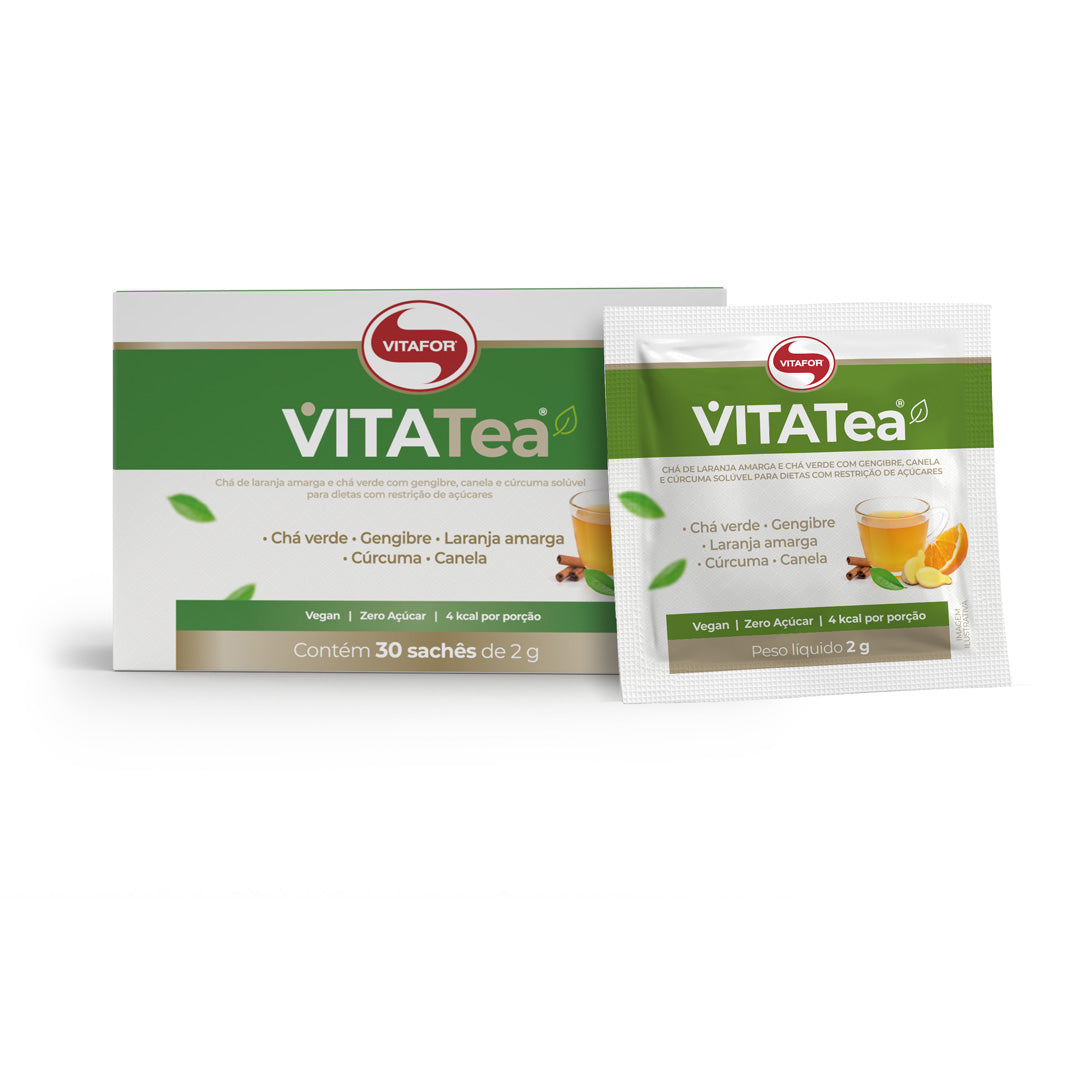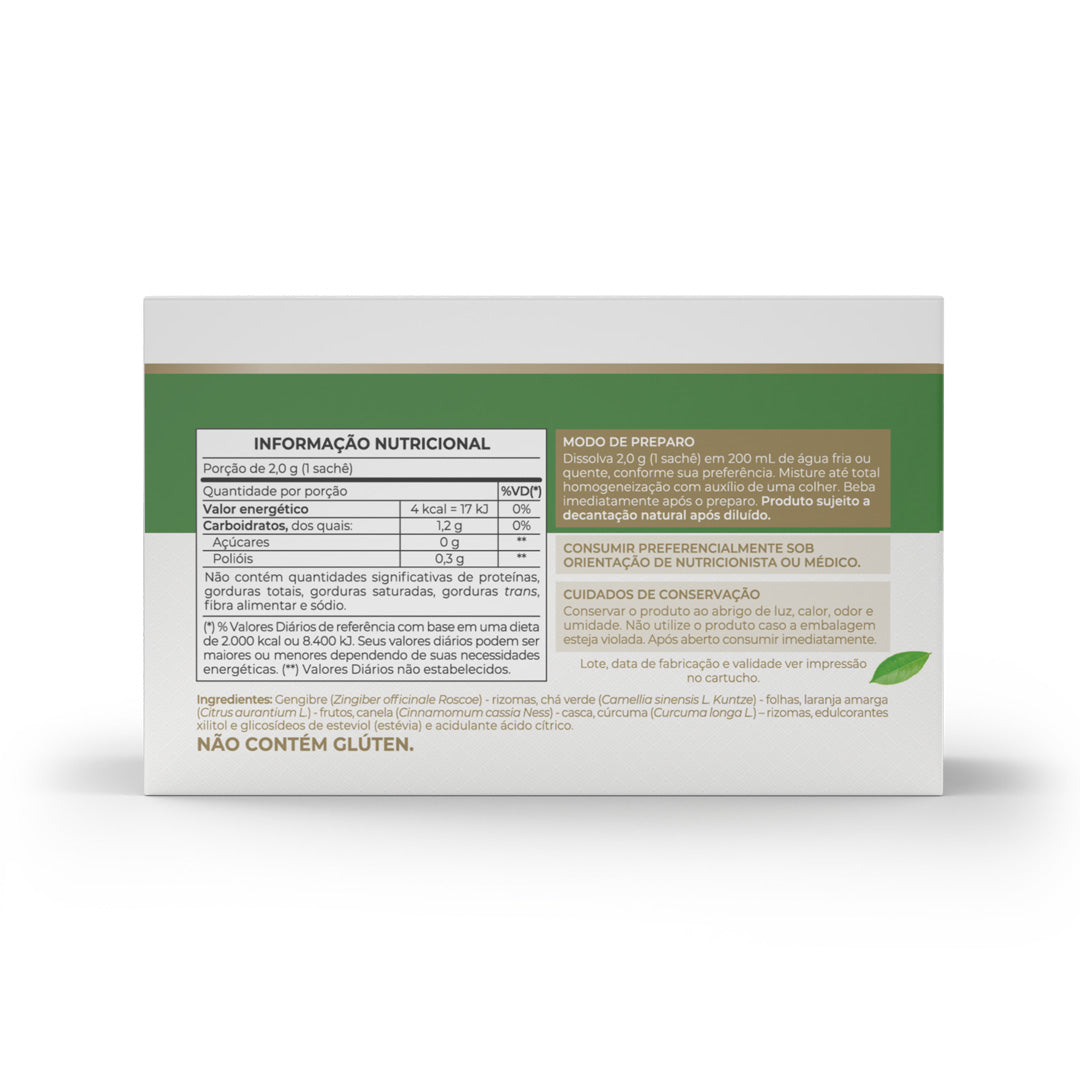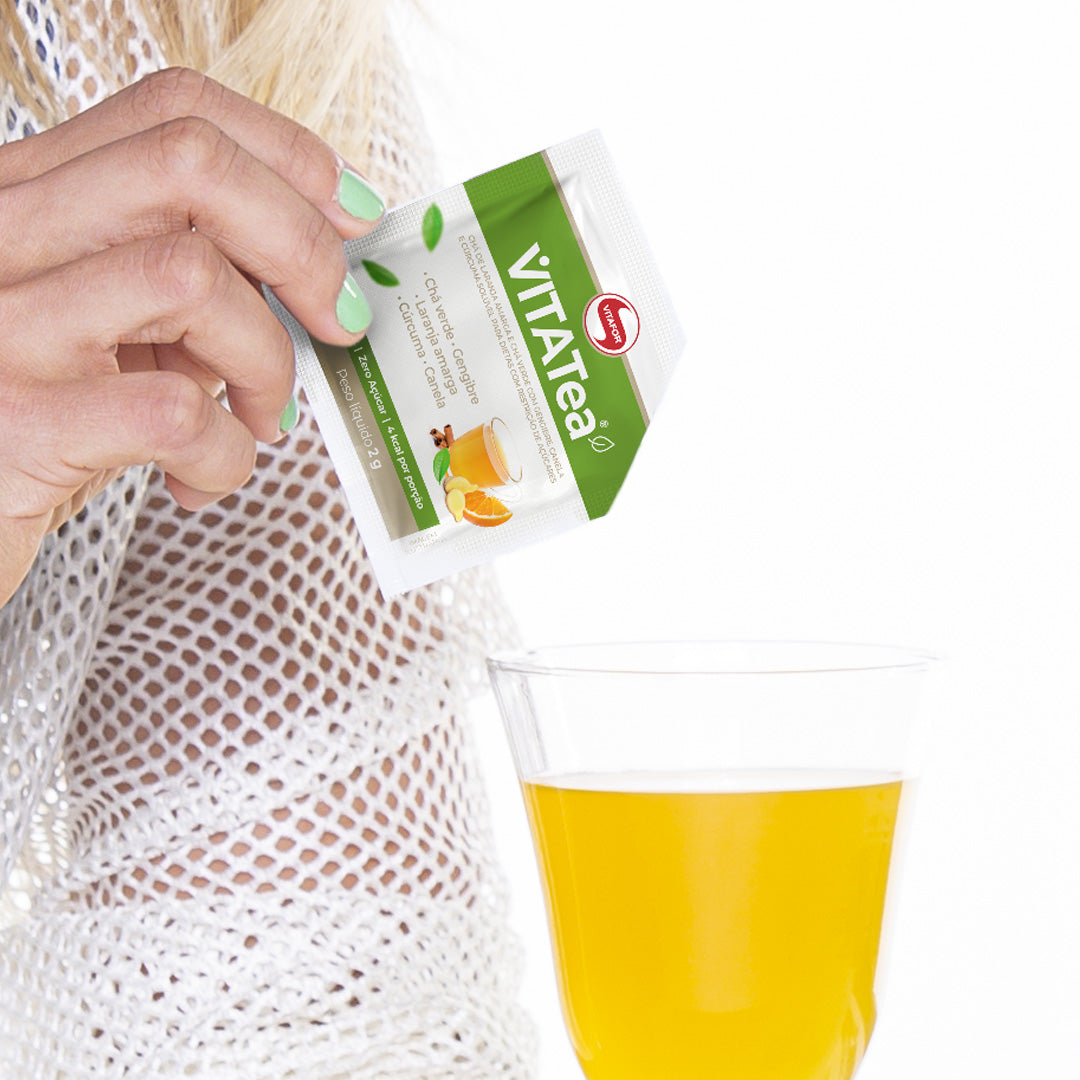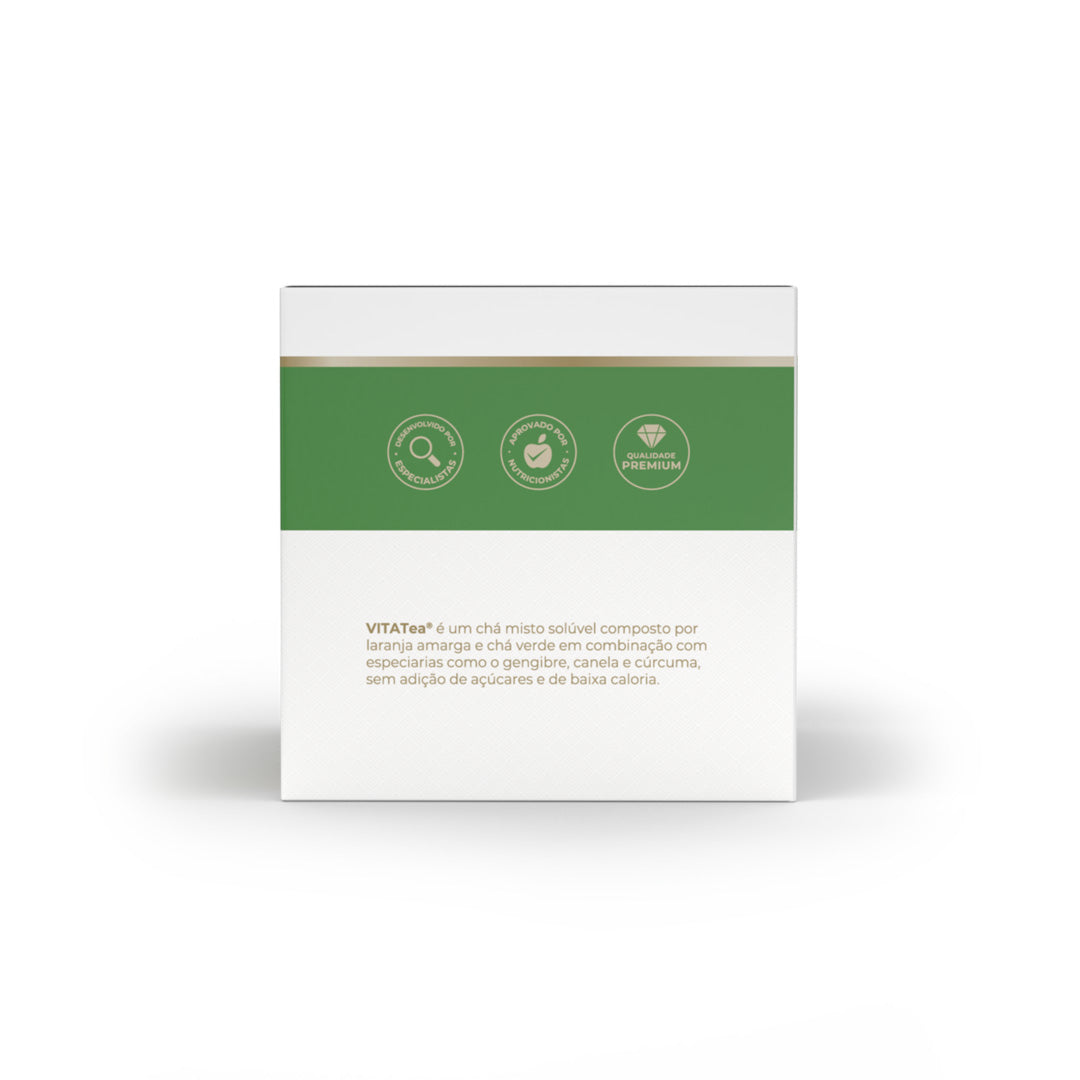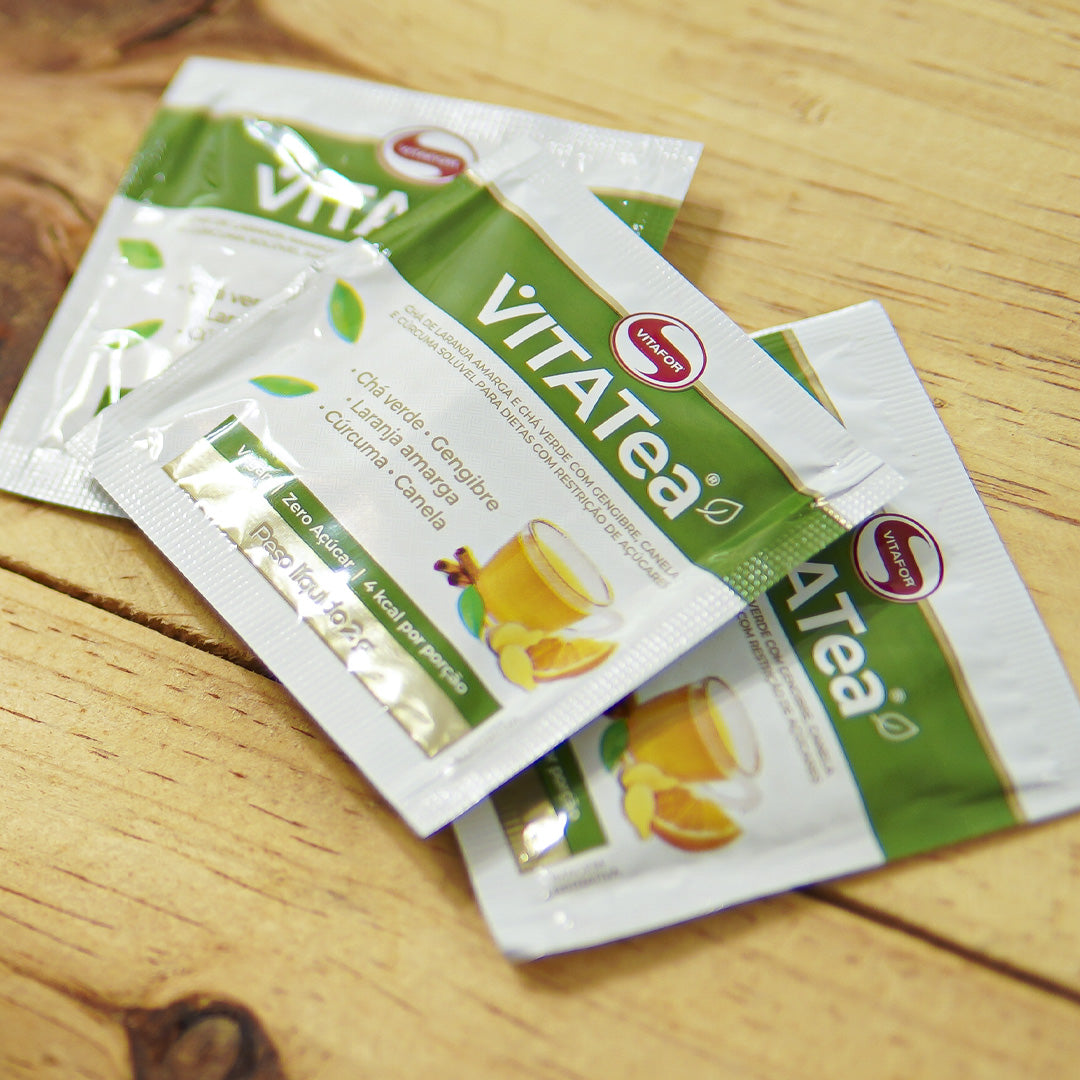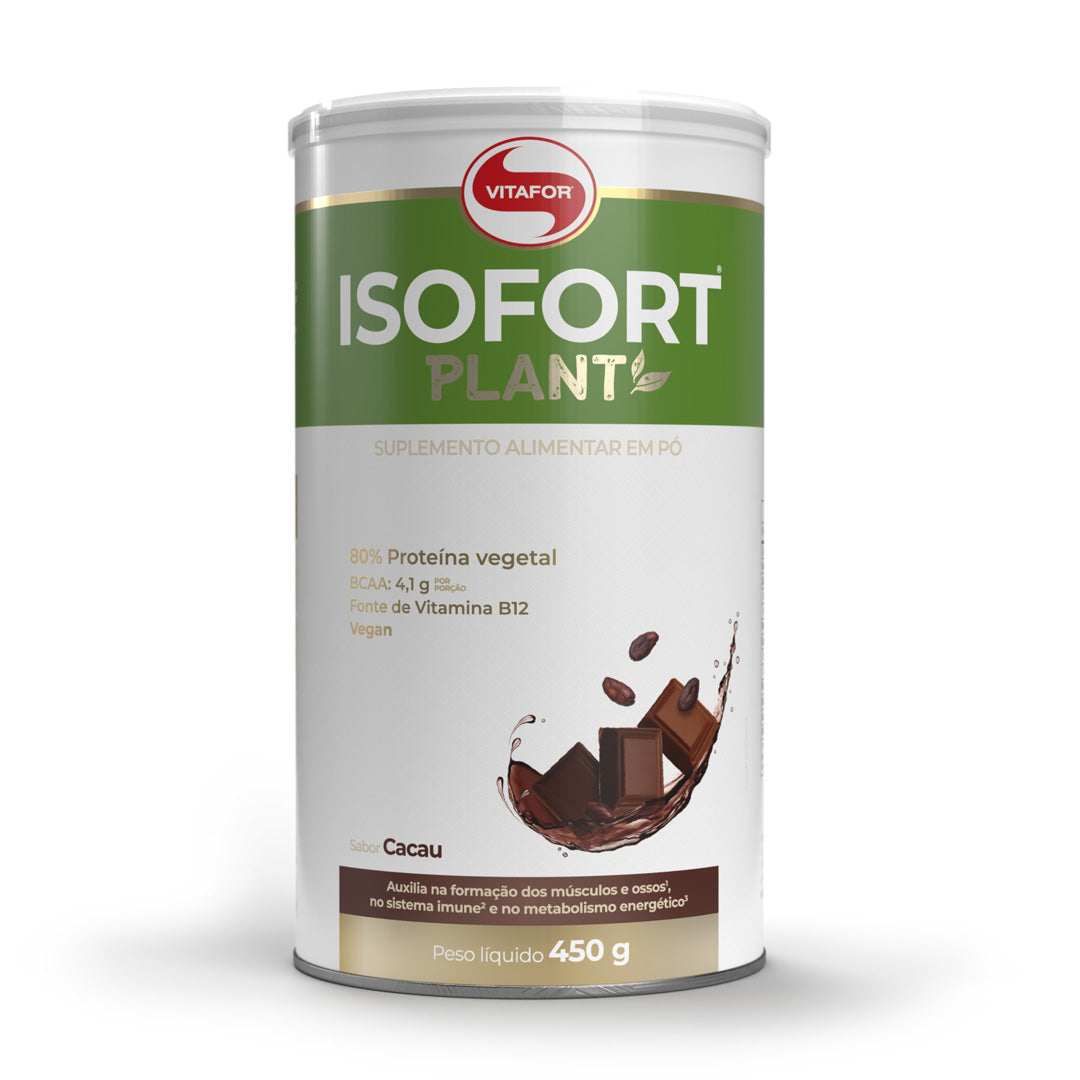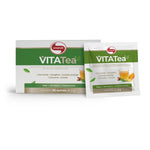
Regular price
323 kr
Regular price
Sale price
323 kr
VITATEA® : An invigorating instant tea
Benefits of consumption:
- Combination of nutrients and spices for your well-being
- Low calorie and no added sugar
Differentiators:
- Intelligent formulation that works in synergy for easy dissolution and practical consumption
- Can be consumed hot or cold at different times of the day
- Enriched with bitter orange, green tea, ginger, turmeric and cinnamon
- Sweetened with stevia and xylitol
- Practicality in a sachet
Scientific Data:
The history of tea dates back hundreds of years, as a way to flavor water, participate in social events, and even as a preventative health measure. As medicine and science advance, we better understand the benefits of tea, which can provide nutrients that improve mood, have diuretic, anti-inflammatory and antioxidant properties.

References:
- DOI: 10.3390/biom10040603
- The origins of tea: the history of the drink that never goes out of style - Food with History (comidacomhistoria.com.br)
- Stohs SJ, Preuss HG, Shara M. A Review of the Human Clinical Studies Involving Citrus aurantium (Bitter Orange) Extract and its Primary Protoalkaloid p-Synephrine. International Journal of Medical Sciences. 2012;9(7):527-538. doi:10.7150/ijms.4446.
- Kaats GR, Miller H, Preuss HG, Stohs SJ. A 60 day double-blind, placebo-controlled safety study involving Citrus aurantium (bitter orange) extract. Food Chem Toxicol. 2013 May;55:358-62. doi: 10.1016/j.fct.2013.01.013. Epub 2013 Jan 25. PMID: 23354394.
- Sasazuki S, Komdama H, Yoshimasu K, et al. Relationship between green tea consumption and severity of coronary atherosclerosis among Japanese men and women. Ann Epidemiol2000;10:401-8.
- Khan N, Mukhtar H. Tea and health: studies in humans. Curr Pharm Des. 2013;19:6141–6147.
- Misaka S, Yatabe J, Müller F, Takano K, Kawabe K, Glaeser H, Yatabe MS, Onoue S, Werba JP, Watanabe H, Yamada S, Fromm MF, Kimura J. Green tea ingestion greatly reduces plasma concentrations of nadolol in healthy subjects. Clin Pharmacol Ther. 2014 Apr;95(4):432-8.
- Mao QQ, Xu XY, Cao SY, Gan RY, Corke H, Li HB. Bioactive compounds and bioactivities of ginger (Zingiber ofcinale Roscoe). Foods. 2019 Jun;8(6):185.
- Shahrajabian MH, Sun W, Cheng Q. Clinical aspects and health benefits of ginger (Zingiber ofcinale) in both traditional Chinese medicine and modern industry. Acta Agriculturae Scandinavica, section b—Soil & Plant Science. 2019 Aug 18;69(6):546-56.
- Ammon HP, Wahl MA. Pharmacology of Curcuma longa. Medical plant. 1991 Feb;57(01):1-7.
- Araujo CA, Leon LL. Biological activities of Curcuma longa L. Memórias do Instituto Oswaldo Cruz. 2001 Jul;96(5):723-8.
- Chainani-Wu N. Safety and anti-inflammatory activity of curcumin: a component of tumeric (Curcuma longa). The Journal of Alternative & Complementary Medicine. 2003 Feb 1;9(1):161-8.
- Brazilian Society of Rheumatology. Osteoarthritis (Arthrosis). Sao Paulo-SP. September 27, 2017. Available at: www.reumatologia.org.br/doencas-reumaticas/ .
- Zhang C, Fan L, Fan S, Wang J, Luo T, Tang Y, Chen Z, Yu L. Cinnamomum cassia Presl: a review of its traditional uses, phytochemistry, pharmacology and toxicology. Molecules. 2019 Jan;24(19):3473.
- Lin CC, Wu SJ, Chang CH, Ng LT. Antioxidant activity of Cinnamomum cassia. Phytotherapy Research. 2003 Aug;17(7):726-30.
- Verspohl EJ, Bauer K, Neddermann E. Antidiabetic effect of Cinnamomum cassia and Cinnamomum zeylanicum in vivo and in vitro. Phytotherapy Research: An International Journal Devoted to Pharmacological and Toxicological Evaluation of Natural Product Derivatives. 2005 Mar;19(3):203-6.
- He Y, Yue Y, Zheng X, Zhang K, Chen S, Du Z. Curcumin, inflammation, and chronic diseases: how are they linked? Molecules. 2015 May 20;20(5):9183-213. doi: 10.3390/molecules20059183. PMID: 26007179; PMCID: PMC6272784. Available at: https://www.mdpi.com/1420-3049/20/5/9183

